At Tanjore Tiffin Room, peek into the history of a Tamil family and its food
A visit to the Tanjore Tiffin Room feels like walking down the memory lane of founder Kishore DF’s ancestry. With food inspired from the family kitchens and walls adorned with family artefacts, the vast menu deserves more than just one visit.
At Tanjore Tiffin Room in Anjuna, Goa, the mismatched décor is deliberate and metaphorical.
The red community room features two long tables and incongruous chairs that allow 18 people to dine together; the chandeliers overhead do not match each other either; and the walls are adorned with century-old black and white photographs, framed postcards and letters, and vintage mirror frames.
The mismatched interiors of the restaurant convey that one need not be from the same geographical location, age group, or background to sit together in the community room and be part of conversations with strangers over home-cooked Tamilian food.
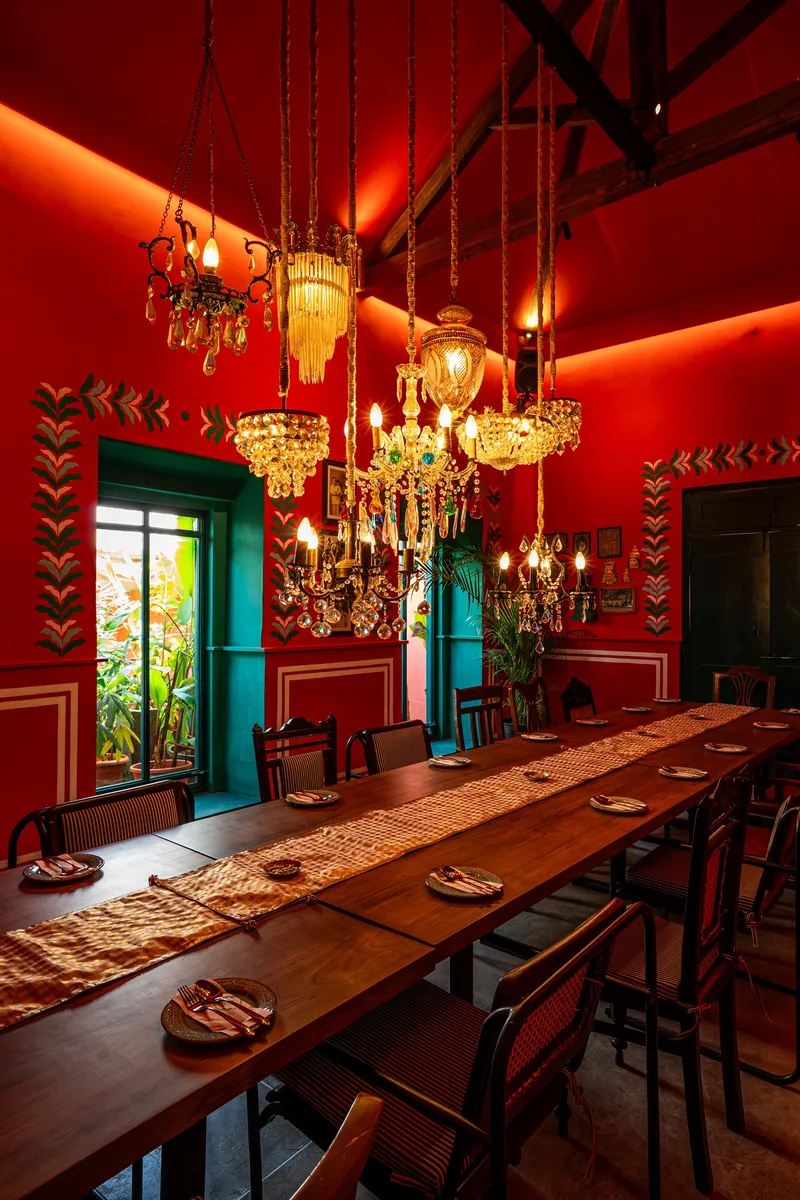
The red community room at Tanjore Tiffin Room
“If there is one thing that I want my diners to feel, it is that they should feel like they came to somebody’s home,” says Founder Kishore DF in a conversation with YS Life.
The letters, he reveals, were once sent to him by his grandfather. In fact, all the artefacts and photographs belong to his ancestors and are sourced from his family home in Chennai. “I left Chennai when I was 18 and I have spent the last 40 years in Mumbai. Tanjore Tiffin Room is a reflection of my home,” he adds.
Kishore did not want Tanjore Tiffin Room to be a cliched Indian restaurant stuffed with an overkill of Indian artefacts. “I love having a place which is very European in terms of its demeanour, and then make it personal with Tamilian stuff.”

The sampler tray at Tanjore Tiffin Room is served to every guest to help them get familiar with the flavours before placing an order
After tasting success in Mumbai’s Versova and BKC, Kishore brought Tanjore Tiffin Room to Goa, which he now calls home. Housed in a 150-year-old Portuguese bungalow, the restaurant is spread across 6,500 sq ft, and five seating areas, with the capacity to host 170 people at a time.
Kishore, who is known for establishing eateries including Pot Pourri and Lemon Grass, Seijo & The Soul Dish, WTF!, The Big Nasty, Jimmy Hu, and Butler & The Bayleaf, has spent more than two decades in the restaurant business.
“Six to seven years ago, the market in Mumbai was already getting saturated with the kind of food (Asian and European) that we were doing. The lifestyle category predominantly did European or continental and Mediterranean food. And the other guys did Asian with a slightly heavy accent on Chinese, enveloped by entry-level Japanese,” he recalls. “I wanted to do something that was yet to be done. And went back to my roots.”
Beyond its decor and ambience, Tanjore Tiffin Room provides diners a peek into Kishore’s childhood and family home through its food too.
The menu opens with a short description of the most commonly used terms in it, to allow diners to get familiar with the terms used in a Tamilian kitchen: ‘porial’, ‘kolumbu’, ‘roast’, ‘stew’, ‘khorma’, and ‘chettinad’.
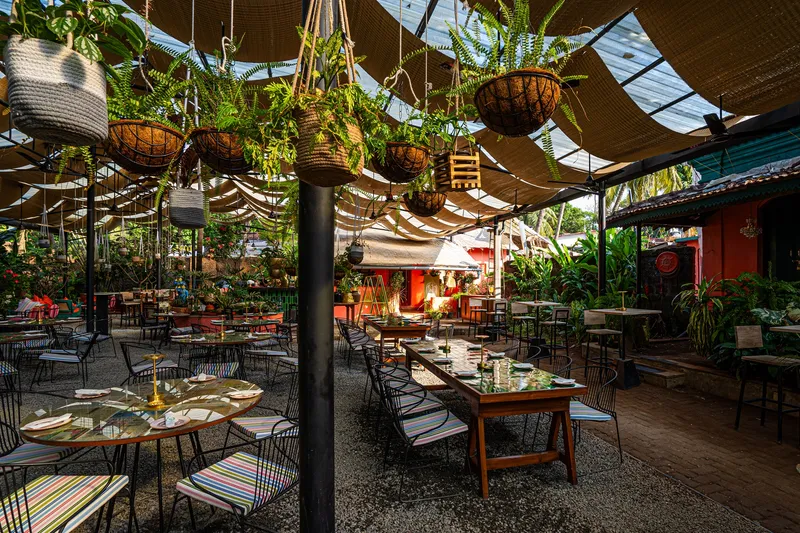
The vast garden—reminiscent of a rainforest—is also unique to the Goa outpost of Tanjore Tiffin Room
A closer look reveals recipes that are inspired by Kishore’s family. For instance, Padmini Mutton Cutlet pays homage to Kishore’s mother, Pankajam’s Lamb Chops and Kasturi’s Puli Kolumbu are from his favourite aunties’ kitchens, and there’s also one Meenakshi’s Vatha Kolumbu and Uma Athai’s Curry—all makes one feel at home.
The two outlets in Mumbai have the same menu, but the one in Goa’s outpost is expansive and is dominated by small plates. “Even when people (in Goa) come for lunch, they have a couple of drinks, which is never the case in Mumbai. To enhance that experience, we created 16 new small plates,” Kishore explains.
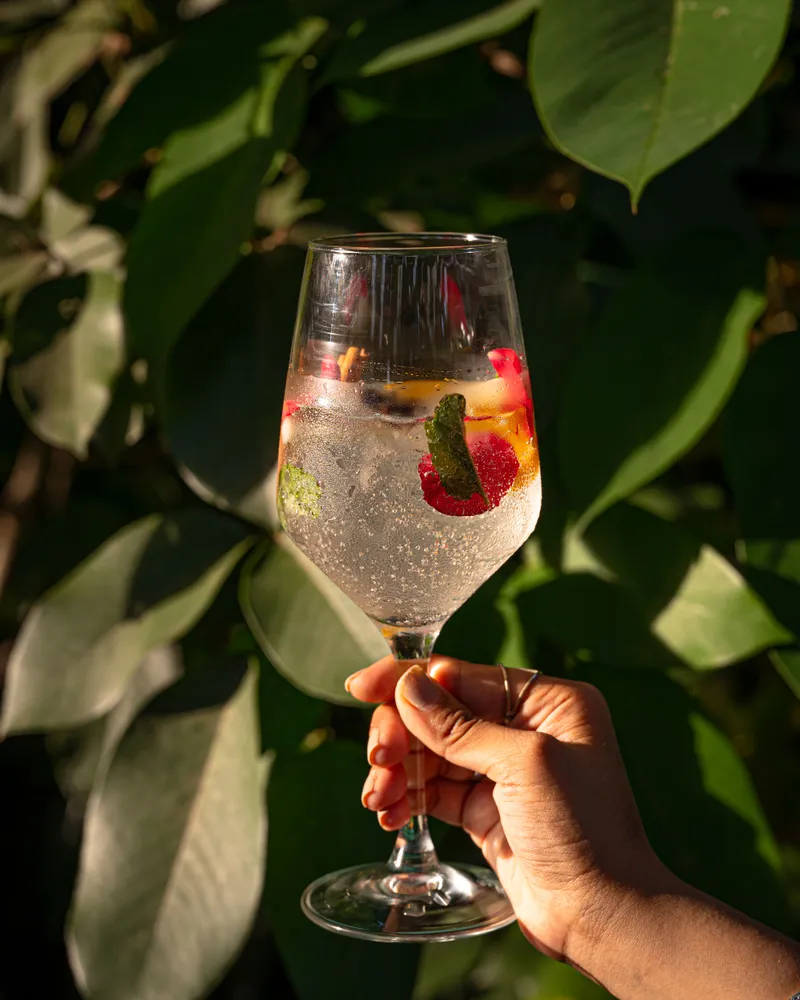
Garden Galata, as the name suggests, is a garden-in-a-glass–as colourful and refreshing as the surrounding flora and fauna of Tanjore Tiffin Room’s garden
The vast garden—reminiscent of a rainforest—is also unique to the Goa outpost. “There had to be a place to relax and lounge. Goa is the strongest element here, so we did not want to take anything away from it, instead want to feed off it,” Kishore says.
Additionally, the menu features seafood—squid, crabs, clams, and chonak fish—to pay homage to Goa. However, that doesn’t mean vegetarian diners will miss out on any deliciousness. The menu offers 18 different vegetarian small plates—Mini Gunpowder Idlis, Kothu Parotta, Mushroom Pepper Fry, Jackfruit Ghee Roast Birrai Taco, and Paneer Pepper Fry are some of our top picks.
For non-vegetarians, it is a dream come true as there are 33 different options for small plates and starters on the menu.
The cocktails are also crafted as a tribute to the rich flavours of a traditional Tamilian home. There’s a tamarind and coconut dark rum Thalaivah, a version of LIIT called Tamil Sunrice, and a rum-based Pondicherry Punch. YS Life’s favourite would be the Garden Galata. As the name suggests, the gin-based cocktail is a garden-in-a-glass–as colourful and refreshing as the surrounding flora and fauna of Tanjore Tiffin Room’s garden. With passion fruit, rose petals, orange and cucumber adding to the colours and freshness, the Garden Galata can be customised with vodka, tequila or gin.
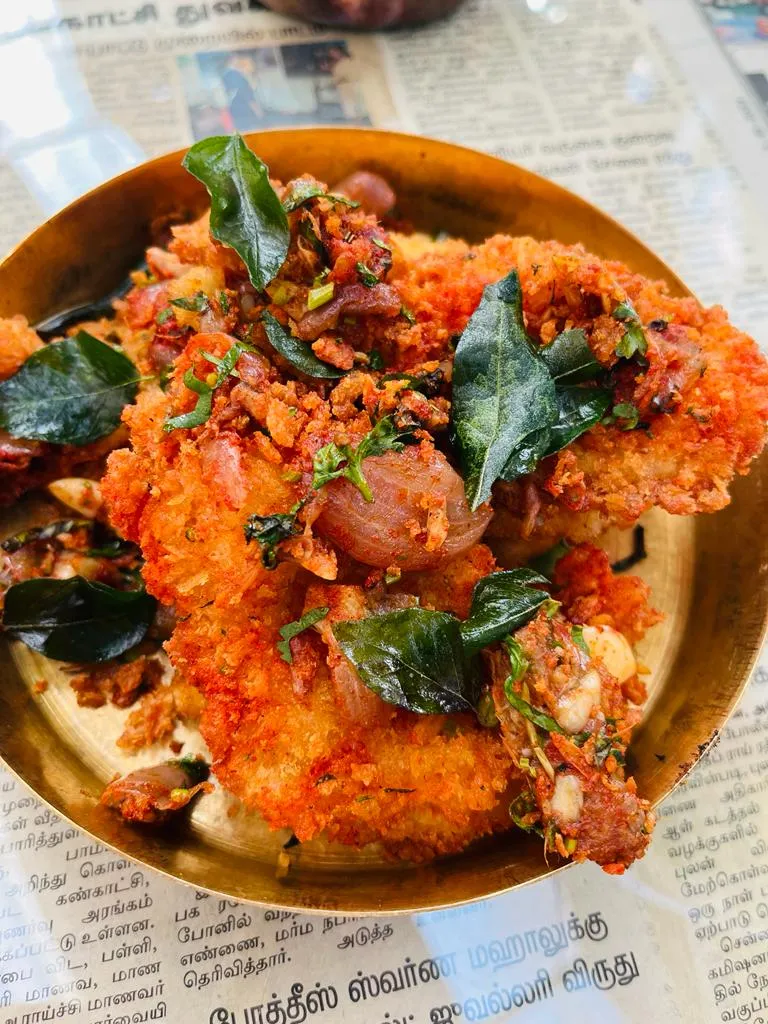
Karaikudi Fried Prawns | Image: Debolina Biswas
To start with, the Karaikudi Fried Prawns caught my eye and I wasn’t disappointed. The crunchy flattened, batter-fried prawns tossed with curry leaves and mild spices, were the perfect start to the meal. Next came Tamil Nadu’s street food special—Kothu Parotta, the typical shredded flaky bread tossed with spices, eggs, a tangy gravy and chicken. Although enticing to look at, it failed to touch the soul like the prawns did.
Tanjore Tiffin Room also has a tradition of introducing its diners to the different curries and rice it offers to help them get familiar with the flavours before placing an order.
While each curry has its own distinct flavours and spice level, I decided to go with the crowd favourite—Madras Chicken Railway Curry—a classic Anglo-Indian delicacy that originated at Arakkonam Junction in Tamil Nadu. The creamy coconut, onion and tomato-based curry, paired well with the soft, just off pan appam—a thin, lacy, rice-flour pancake.
To pair with the sweetness of Malabar Parotta, the server got us Mutton Ghee Roast—another South Indian hot favourite. The rich, reddish-brown ghee roast masala provided the exact kick needed. Although cooked to perfection, the mutton was a tad bit saltier than it should have been.
The main course also features stew, kolumbu, khorma, and chettinad. Each gravy can be customised with the diner’s choice of protein—chicken, mutton, or prawn.
Tanjore Tiffin Room offers eight variations of rice as well—from the usual rasam and sambhar rice to biryani, and tamarind rice, or one can pair the curries with dosa, idiappam or appam.
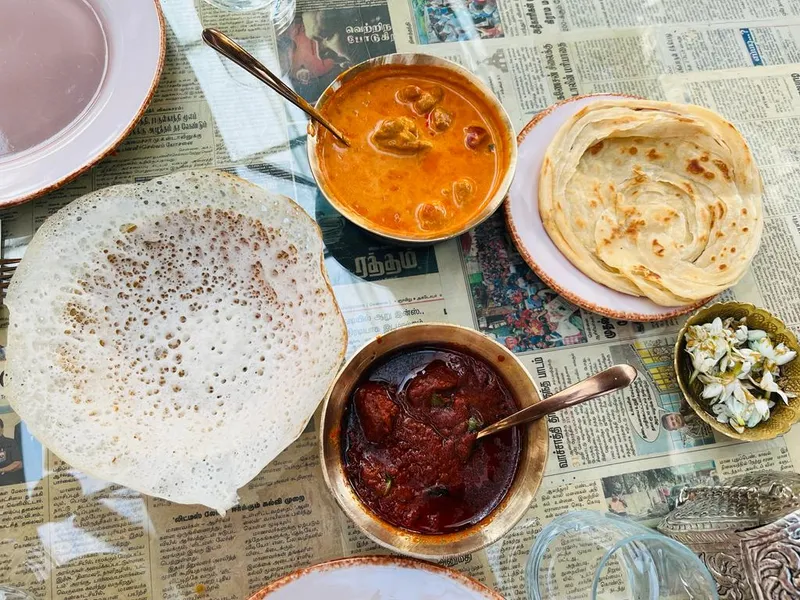
Appam, Madras Chicken Railway Curry, Malabar Parotta and Mutton Ghee Roast | Image: Debolina Biswas
No South Indian meal is complete without payasam. There are options for that too—rice and jaggery, seviya, and moong dal—the choice can be challenging. If payasam is not your fix, mysore pak, ada pradhaman, and coconut jaggery paniyaram come to the rescue.
Kishore doesn’t believe that displaying one’s personal life for the world is odd.
“There is an inner joy where I come from…I was only holding them (family) in good stead, and what better way to pay tribute to a Tamilian ancestry, which was very low-key as a culture, and not exhibit all this stuff?”
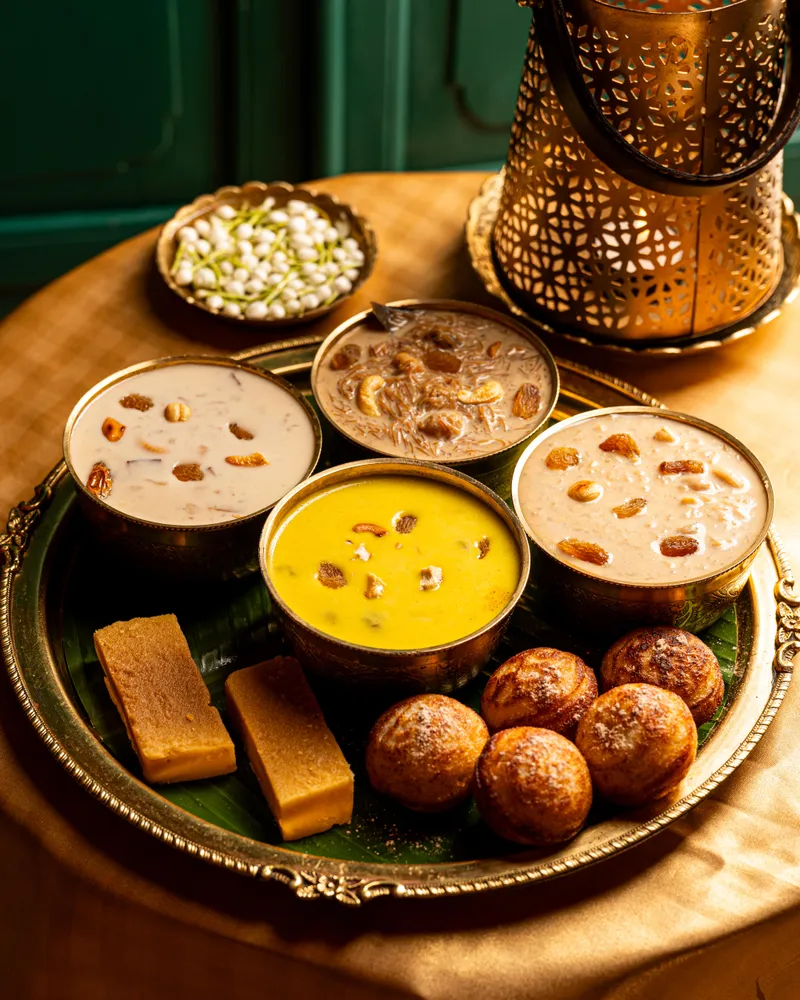
Dessert platter at Tanjore Tiffin Room
Although Kishor believes that Tanjore Tiffin House has the potential to expand further, he opposes the idea of ‘cookie cutting’. “It is not about empire building at all, it is about the experience,” he concludes.
But like most Delhi and Mumbai restaurants that are opening outposts in Goa, will this be another case of scarcely occupied dine-in spots? Only time will tell.
Timings: Monday to Sunday (12 noon to 1 AM)
Cost for two: Rs 1,500 (without alcohol)
Edited by Kanishk Singh







